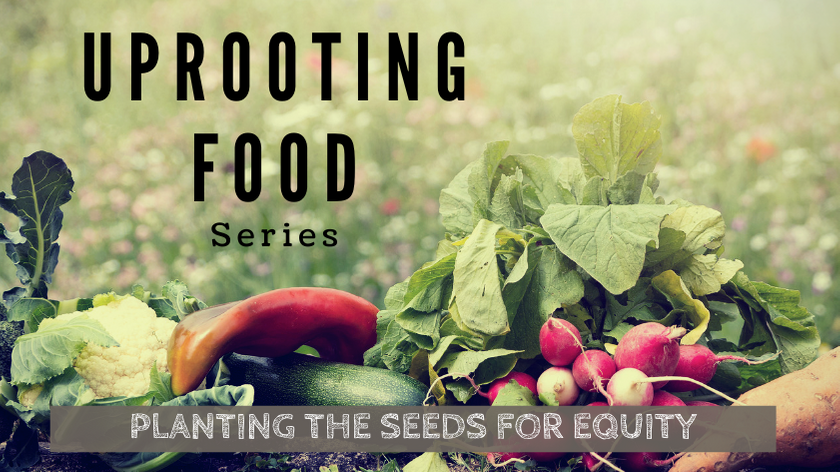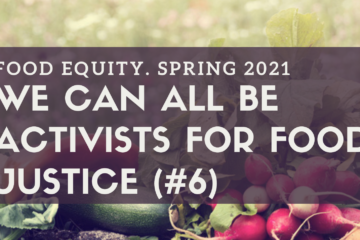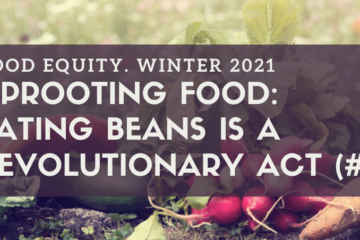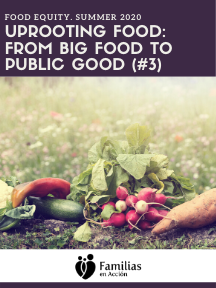
I AM ESSENTIAL
It’s 3 a.m. A father wakes his daughter to prepare for their day of picking cherries. Ready to begin by 4:30 they have packed lunch and dressed for a long summer day in sturdy shoes, long sleeves and long pants hoping for some protection from cuts and scrapes, pesticide irritations and allergic reactions. The cherry crop should be good this year as long as workers can stay healthy, but the family will be making much less money— the mother can’t pick because someone needs to stay home to take care of the younger children because the childcare center closed with a Coronavirus outbreak. She prays her husband won’t bring the virus home to their elderly mother.
Surely they will be eligible for the stimulus checks or maybe the supplemented unemployment benefits? But there is no such support for this family. Even if only one family member is undocumented, the family doesn’t dare draw attention to themselves. Surely there are unions to protect them or paychecks that are a living wage? There are no rules about length of work days and certainly no overtime pay. Surely OSHA regulations keep workers safe from harm? But no one is watching. The meat industry, for instance, is self regulated. Processing plants were mandated by the government to continue working during virus outbreaks. Surely they can take “sick days” off to recover or prevent the spread of the virus? Caught between needing the income and risking illness, workers must hope that the harvest will not be cut short. The low wage labor force is seen as necessary yet expendable. When the food chain breaks it is on the backs of these workers and the wallets of the corporate owners..
WE ARE ESSENTIAL
Along every step from farm to table the essential workers keep America fed. Essential workers have always been essential and vital to the economy and livelihood of millions of Americans, long before they were deemed “essential” by nearly every state governor once the Coronavirus pandemic was declared an emergency. Of the essential workers that make up the U.S. workforce, data from 2019 shows:
- Healthcare workers make up the most: 30.2%, or 16,679,875 people
- Food and agriculture workers are next largest: 20.6%, or 11,398,233 people
- Of those in the food and agriculture sectors, people of color (including those who identify as Latino/Hispanic) make up 50%, or 5,699,116 people (Economic Policy Institute).
ESSENTIAL LABOR
The relationship that the U.S. has with the people who work in food and agriculture has always been tenuous and demanding. The very policies and laws that have been passed since the 1970’s by politicians and policymakers have ensured that these people – these essential workers – are readily available to do back-breaking and intensely physical labor for meager pay, little to no benefits and a severe lack of safety and health regulations. Agriculture is one of the most hazardous industries in America. As average temperatures rise, due to climate change with heat waves and more frequent wildfires, farmworkers will be at an ever-heightened risk of heat- and smoke-related illnesses.
This work standard is what supports the capitalist, profit-driven model of food production and its labor market in the US and globally. To remain profitable, and to keep prices low, the system relies on low labor costs–at the expense of the health and wellbeing of exploited workers and regardless of the environmental impact.
Even before the pandemic this industry has failed to take care of these workers. California’s San Joaquin Valley, called “the food basket of the world,” ironically has the highest prevalence of food insecurity of any region in the state (Hill et al. 2011) Census numbers from 2007 in the American Community Survey showed that residents were among the highest rates of poverty in the US. The current census will be even more telling. 82% of migrant farm workers in Georgia experience food insecurity. (Hill et al. 2011, May. Prevalence and Predictors of Food Insecurity in Migrant Farmworkers in Georgia. Am J Public Health. 101(5): 831–833)
The people who feed our country cannot afford to purchase the food they pick and process. Federal Nutrition Research Advisory Group wrote in the American Journal of Clinical Nutrition (July 2020): “Poor diets lead to a harsh cycle of lower academic achievement in school, lost productivity at work, increased chronic disease risk, increased out-of-pocket health costs, and poverty for the most vulnerable Americans.” (https://www.cnn.com/2020/07/20/health/us-poor-nutrition-illness-death-wellness/index.html)
If the inequities do not give us pause on a human level, the ultimate effect on our economy should. When money spent on healthcare for chronic, nutritionally related diseases rises, so do government budgets; the cost of insurance and healthcare rises for us all, and even the private sector loses its competitive edge. When the ramifications spread from “them” to “us” maybe corporations and consumers alike will pay attention.
ESSENTIAL CHANGES
The financial and human impact of this system, locally and globally, is unsustainable. One of the benefits of the pandemic is that inequities have shown themselves at the grocery stores of the privileged. Empty shelves have prompted us to ask why. And there are signs that Millenials and their purchasing power and ethics may lead the way toward responsible change. They are expecting and willing to seek out food options that are humanely processed and environmentally sustainable. A study, reported in July 2020 in Forbes magazine, by Midan Marketing found that a growing number of consumers are already gravitating towards grass-fed meat and alternatives to mass produced factory meat. They are looking to support socially conscious firms rather than the very limited number of large, profit-driven corporations that currently control our food options. (https://www.forbes.com/sites/hankcardello/2020/06/18/3-ways-to-fix-the-meat-industrys-empathy-problem/?sh=2f86f72375e4)
CONCLUSION
What keeps our food system going is the people- the workers. From local farms to processing facilities, food systems across the nation are often managed by corporations with leaders who have the privilege to be financially secure while workers in every aspect of the US food system are the ones who are truly essential. It is a matter of time before they will be able to leverage their power in a time where the entire country is looking to them for survival. Our collective action for equity will determine the kind of country that we want for our children and grandchildren. One that benefits everyone or a country that profits off of the backs of our most vulnerable community members.
WHAT’S NEEDED
- Support the work of Farmworker Justice, www.farmworkerjustice.org, to help farm workers improve wages, working conditions and immigration policy
- Purchase produce from farmers of color and products that support safe, sustainable working conditions
- Support living wage and worker protection rights by communicating with elected officials
RESOURCES
- Essential Workers Data, from the Economic Policy Institute. https://www.epi.org/blog/who-are-essential-workers-a-comprehensive-look-at-their-wages-demographics-and-unionization-rates/
- http://www.farmworkerjustice.org/advocacy_program/immigration-and-labor/
- Hill et al. 2011, May. Prevalence and Predictors of Food Insecurity in Migrant Farmworkers in Georgia. Am J Public Health. 101(5): 831–833
- https://www.forbes.com/sites/hankcardello/2020/06/18/3-ways-to-fix-the-meat-industrys-empathy-problem/?sh=2f86f72375e4


